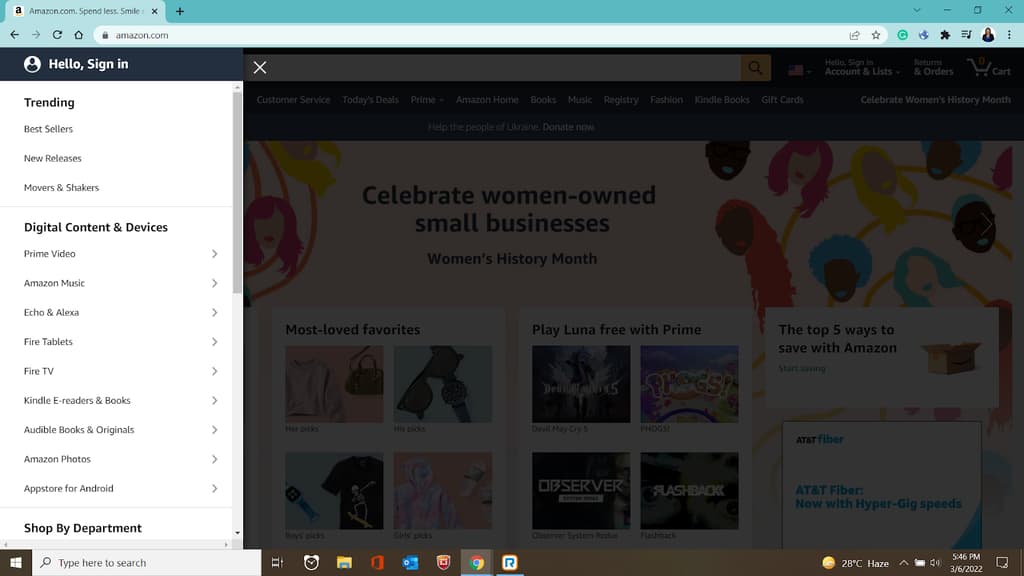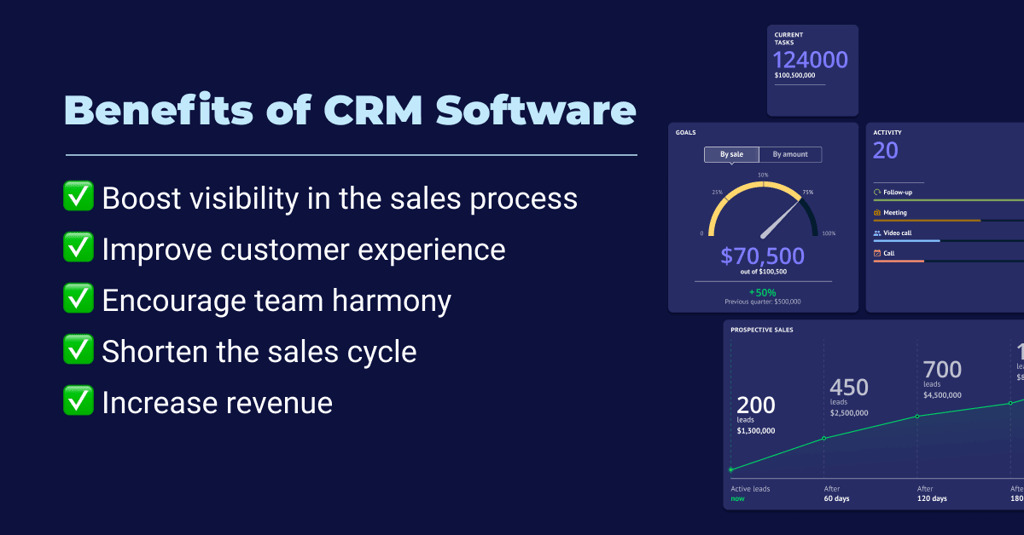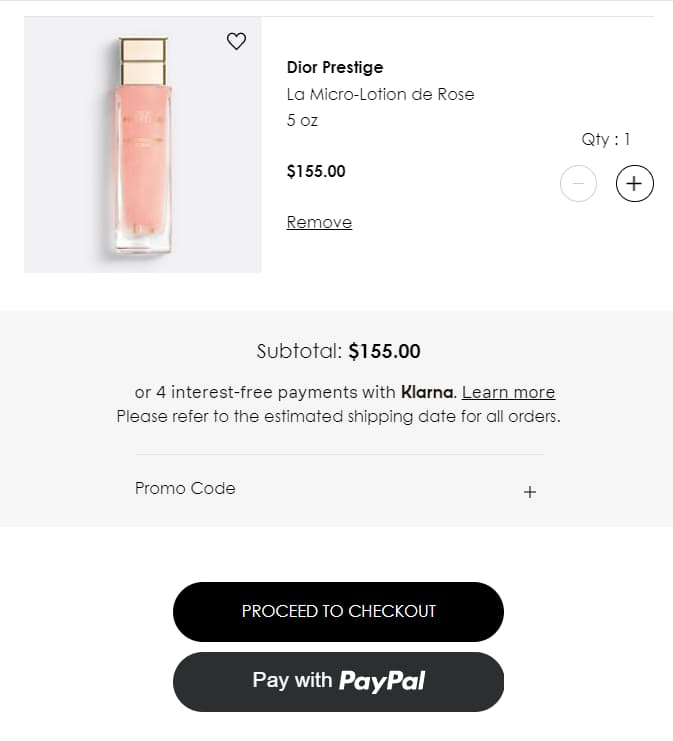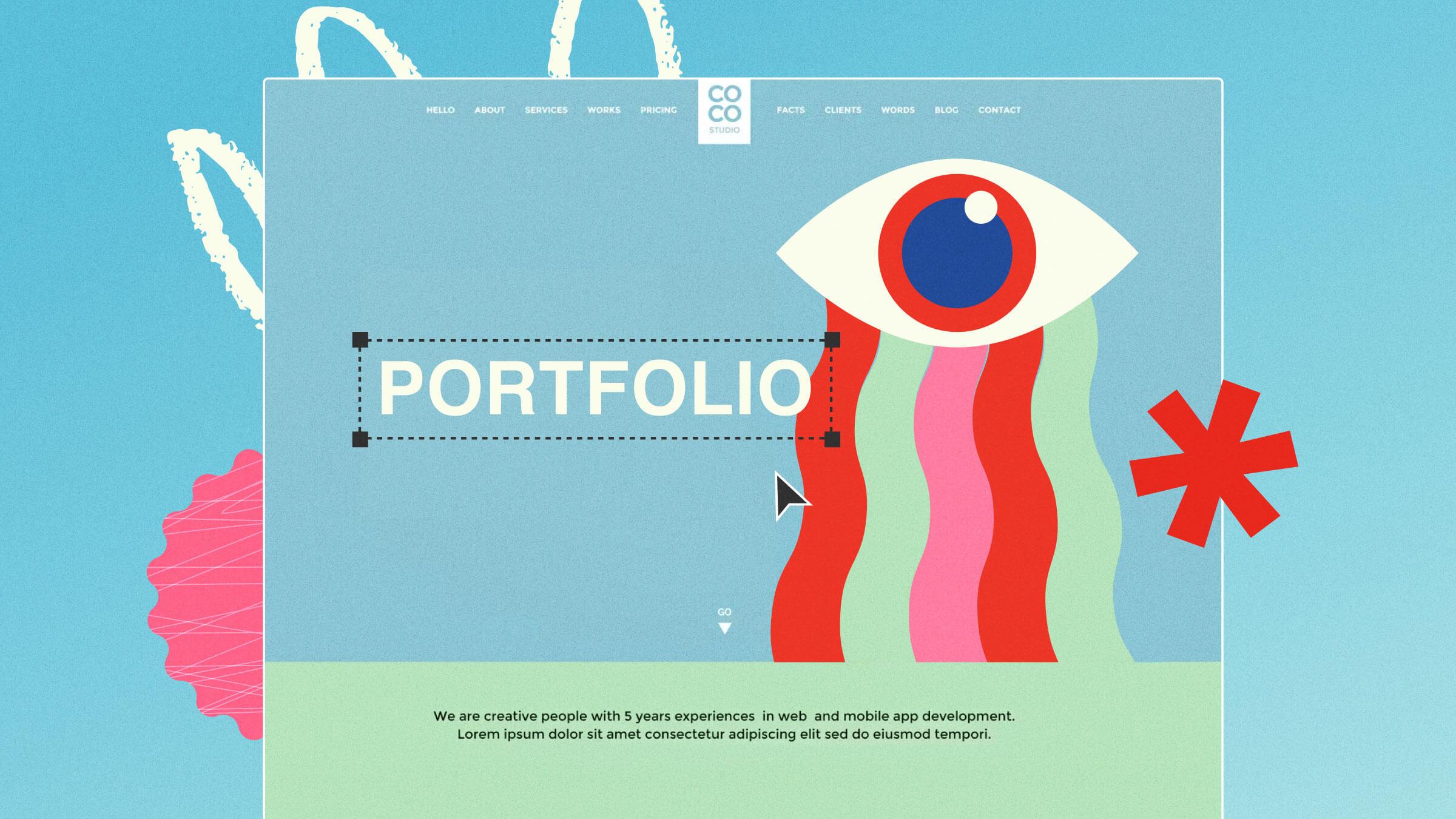Want to maximize your online business? From mobile-ready design to multiple security features, here are the must-have elements of a successful eCommerce website in 2022.

With the onset of the global pandemic, the shift towards online shopping is rapidly becoming the new normal. In 2021 alone, eCommerce generated 4.9 trillion U.S. dollars worldwide.
And it’s not expected to slow down any time soon. A forecast by Statista reports that eCommerce is set to grow by 50 percent over the next four years – and projected to reach a whopping 7.4 trillion US dollars by 2025. So if there’s ever been a right time to hop on to the eCommerce train – it’s now.
With this in mind, it’s super important to optimize your website to provide your customers with the best online shopping experience possible. Your website is the online home of your business and a central location to direct your target audience, so it should be on point, on-trend and up to speed with all the latest eCommerce features. Want to maximize your online business? Here are the must-have elements of a successful eCommerce website in 2022.
The Basic Features of an eCommerce Website in 2022
A functional eCommerce website typically has a Homepage, a Products page, a Blog, and an About Us page. But in 2022, eCommerce owners need to think beyond the basics to meet the ever-changing technological landscape and developing needs of their customers. Here are some of the essential elements every eCommerce website should include in 2022.
1. Responsive Website Design




In this day and age, consumers are using their mobile phones more and more to shop and interact with brands online. In just a few scrolls and clicks, consumers can purchase products right from the comfort of their screen – which is why it’s super important to ensure your website is mobile friendly and responsive for all devices.
Recent reports show that 79% of smartphone users purchased products online with their mobile devices within the last six months, and due to the global pandemic, many B2B brands have adopted mobile websites – with 80% of B2B buyers now using a mobile device to make purchases. The development of custom-branded apps has also increased in recent years, which has paved the way for optimizing the online customer journey.
How can you make your website mobile-ready? Ensure that it has a responsive design which is adaptable to different screen sizes, layouts and resolutions, and do a mobile-friendly test to ensure it looks great across all devices. You can also use drag-and-drop website builders such as Elemento and even download eCommerce website templates to make your website more responsive.
2. User-Friendly Navigation










Upon visiting a new website, most visitors go straight for the website navigation. According to the 2021 Digital Experience Benchmark Report, the average time on a page across all industries is just 54 seconds. After that, the attention span declines.
To help your visitors get where they need to go easily and efficiently—may it be purchasing, looking for additional information, or even getting in touch with customer service—it’s important to make your navigation as user-friendly as possible.
Eye-tracking research shows people spend 80% of their viewing time on the left portion of your website and only 20% on the right side, so to maximize the attention of your audience, pay the most attention to the left-side portion of your site.
Another tip for optimizing your eCommerce website is to make your menu vertical. This makes it easier to shift your navigation to a mobile-responsive design, and can make your website easier to navigate for both new and returning visitors.

Amazon is a great example of an optimized website with both a vertical and user-friendly navigation interface. Other navigation best practices include:
- List the most important features at the top
- Choose SEO-optimized terms for your menu
- Include a search bar
- Label important pages and cluster them accordingly
3. Multiple Security Features




As technology continues to develop, the risk of hacking and security breaches rise. That’s why another must-have for your eCommerce website is security features. One of the best methods to secure data and information online is to use VPN (a virtual private network). This is usually your website’s first line of defense against malicious malware and other cyberattacks, many times, without you even knowing. With your consumer’s data and profits at high risk, businesses are encouraged to use a professional type of VPN service from GoodAccess. This is especially useful when you have medium to large teams from different parts of the world accessing your precious data.
In addition to these measures, implementing a Cloud-Native Application Protection Platform (CNAPP) can significantly enhance your website’s security. CNAPP provides comprehensive protection for cloud-native applications, integrating seamlessly with modern cloud technologies and architectures
According to a Verizon report, 2021 saw the highest average cost of data breaches in 17 years, amounting to US$4.24 million. It echoes the results of the year before, in which the Federal Bureau of Investigation’s (FBI) Internet Crime Center (IC3) received a record-breaking 791,790 cybercrime complaints, responsible for US$4.2 billion in victim losses.
To keep your website – and your customers’ information – secure and protected – it can pay to enhance your website with the following security features:
Install an SSL (Secure Socket Layer) Certificate
This ensures that all data passed between the web server and browser remains private.
Set up multi-factor authentication
You never know when and where your passwords might get compromised. That’s why setting up a second authentication factor to verify a login attempt is essential for maintaining the integrity of your accounts. Likewise, changing your passwords regularly can also boost security.
Choose plug-ins carefully
While plug-ins can enhance the digital customer experience of your website, it’s important to be careful to not compromise your website. For a list of safe plug-ins, check out this list of the Best Website Security Software for your website.
4. Shopping Cart and Checkout Buttons


An eCommerce website’s primary goal is to gain revenue, and an optimized shopping cart feature will only help you maximize this. When it comes to optimizing your shopping cart, customers expect features such as fast service, seamless checkout, trustworthy payment options, and even the option to preview their orders before completing a purchase. So, consider using a headless eCommerce platform solution as it will allow you to customize your site’s checkout the way you want and make it simple for your customers. A headless architecture separates the front and back ends, providing more flexibility.
If your customers encounter barriers or difficulties during their customer journey, it can greatly affect their decision to buy from your brand. According to Baymard, these barrieres resulted in an average cart abandonment rate of 69.82%, while retail, fashion, and travel industries posted a higher abandonment rate of 81%. To avoid your customers bailing on your brand, here are some best practices to follow.
Make your products clickable
This is so customers can review the details of the product before they buy. Give them the option to view product attributes such as size, color, and model, to help them avoid completing an order by mistake.
TradeSafe is a perfect example of a site where all listed products are clickable with a direct add-to-cart option. Customers can easily go to the details page to check the product details before making a purchase. However, they can easily add the product to their cart to make a purchase.
Optimize product names and details
Use SEO-related keywords in the headers of your product page, and ensure the product name is scattered throughout the product description. Make the product name clickable, use words familiar to your audience, and itemize every detail – including the price, shipping details, and description.
Display several checkout buttons
Placing a checkout button in several different locations ensures that website visitors will see them, no matter where they are on your site. It should be easy to find and in their line of sight, which will help to increase your conversion rate.
5. Offer Multiple Payment Options


Your eCommerce website should also be flexible in terms of payment options and methods. While you should know what specific payment method your target audience prefers, having other options available can enhance the customer experience.
Mobile payments such as Venmo, cryptocurrencies, and digital wallets are among the emerging preferred alternative payment methods. In fact, a Fiserve 2021 consumer research reports that 6 out of 10 Gen Z and millennial consumers want their bank to hold cryptocurrencies. While you can still offer traditional payment methods such as a bank transfer and credit card, the appeal of these new methods often stem from the customer wanting to protect their data.
For a higher chance of customer retention and customer loyalty growth, here are some best practices you can apply to your eCommerce website this 2022.
Offer various payment methods
You will never know when a payment channel may be down, so it pays to have other options available. Doing so will make your website more flexible, and perhaps be the difference between an abandoned cart and a sale.
Display your payment options prominently before checkout
One way to build trust with your clients is to reassure them they have plenty of options to complete their purchase. Check out how eBay displays multiple payment options, detailing the information needed to complete the purchase. Clients can even switch currencies for their payment.

6. Detailed Shipping and Return Information




The global pandemic caused a drastic shift in how shipping and supply chains operate globally, and as a result, consumer behavior also changed. To cope, it’s important that brands manage customers’ expectations.
In recent research, Shopify determined that there are two consumer behaviors eCommerce owners must understand. First, 75% of shoppers claim that free shipping greatly influences their decision to check out an item. While 68% of consumers prefer to see shipping costs upfront before making a purchase.
To enhance trust and set expectations, it’s important to display whether your website offers free or paid shipping. Failing to do so may lead to abandoned carts, or even customers shifting to a competitor brand.
Another thing you should consider on your checkout page is informing clients of your return process. This is because 92% of consumers will buy again if the return process is easy.
If you give your customers a great user experience, they will become repeat customers. This not only helps in reducing losses but also in creating better customer relationships.
To address these changes in customer behavior, here are some best practices:
- Display whether the item is on-hand and has remaining stock
- Inform customers about your returns process and expected arrival times.
- Offer real-time customer service options to cater to queries.
- Display Shipping Policy, as well as your Return Policy.
Check out eBay’s Shipping and Returns policies for an idea of how to do it well.


7. High-Quality Photos and Videos


The visual aspects of your website are the first thing to catch your users’ eyes. So, the quality of photos and videos on your website can greatly influence a customer’s first impression of your brand, with 93% of online buyers agreeing that visual appearance is a key deciding factor in a purchasing decision.
Businesses rely strongly on visual content. However, it’s not enough for an eCommerce website in 2022 to just have high-quality images and videos – it’s time for brands to level up. Here are some tips to level up your brand’s visual content.
Shoppable images & videos
Optimize your images and videos to be ‘shoppable’, meaning that your customers can buy your products straight from your visual content. Social media platforms and even Google Lens now allow customers to use images as a direct link to purchase products.
Personalization
As AI improves over time, so will businesses’ capacity to cater to their customers’ needs. Beyond personalized subject lines and inserting their first name into comms, make it a point to customize their digital experience to your site by offering products suited to their region, demographic, and preferences.
User-Generated Content (UGC)
User-generated content is content created by your customers themselves. It’s a great way to generate social proof for your brand. In addition to photos and videos, UGC can also be reviews and testimonials – which can be invaluable to your brand. In fact, Oberlo reports that 89 percent of consumers worldwide read reviews before buying products.
Augmented and Virtual Reality (AR/VR)
Artificial intelligence has come a long way, and now, augmented and virtual reality are becoming the norm. Brands are now enabling their customers to “try” products before they buy them, using technology to allow users to experience a product or service before purchasing. This is what AR/VR Technology can achieve – a mix of virtual and actual customer experience to inform purchasing decisions.
To source high-quality videos, photos, and other elements needed for your website, Envato has a huge selection of options – specifically for eCommerce websites.
8. Contact Page with Multiple Contact Options














So once you’ve convinced a customer to buy your products and trust your brand, what happens next? This is where it’s important to build a relationship with your customers. In addition to finding their email address and adding them to your mailing list, it doesn’t hurt that you have an on-site option where your customers can reach you should they have questions, clarifications, concerns or feedback. This could be in the form of FAQs (Frequently Asked Questions), a contact form, or a live chat. Hubspot’s contact page caters to a variety of different contact methods.

9. Create an Omnichannel Platform








Now that you have an optimized eCommerce website, it’s important to increase your reach by creating an omnichannel platform. An omnichannel platform will help you connect with your customers and provide a seamless customer experience without users having to log in to various social media channels and other platforms.
With an omnichannel platform, you can meet your customers wherever they are and give them a consistent level of service across their chosen communication channels. When you integrate an omnichannel social media customer service into your website, customers can choose how they want to interact. Plus, you can even sync it together with your customer relationship management process and add another layer of personalization.
10. CRM (Customer Relationship Manager)

eCommerce companies need to deliver good digital customer service. Many initiatives can accomplish this goal, but a CRM is an essential feature for any successful eCommerce website. A CRM platform centralizes communications from multiple channels, providing tools to understand your customer’s behavior for:
- Customer Success;
- Marketing initiatives;
- Lead conversion;
- And many other aspects.
When choosing a CRM, look for characteristics such as:
- Flexibility;
- Integration with your main communication channels;
- Tools for optimizing your team’s work;
- Capability to behave as an Operational CRM, Analytical CRM, or Collaborative CRM;
- Any other peculiarity that your brand needs to provide the best customer service possible.
An excellent example of a CRM platform is Kommo. With many of the above characteristics, Kommo can help companies and operations of all shapes and sizes. Offering competitive pricing, it’s a great addition to eCommerce websites that want to improve their customer service without reducing their competitiveness or profit margin.
Optimize Your eCommerce Website in 2022
An optimized eCommerce Website can greatly impact your business. While it’s only one element of your marketing tools and strategies, it’s a major player that could make or break the success of your eCommerce business. Don’t miss the eCommerce train! Optimize your website today and take your brand to the next level.
































